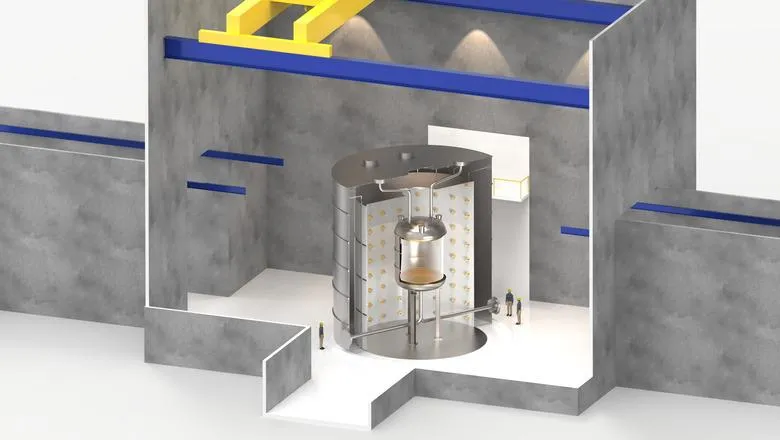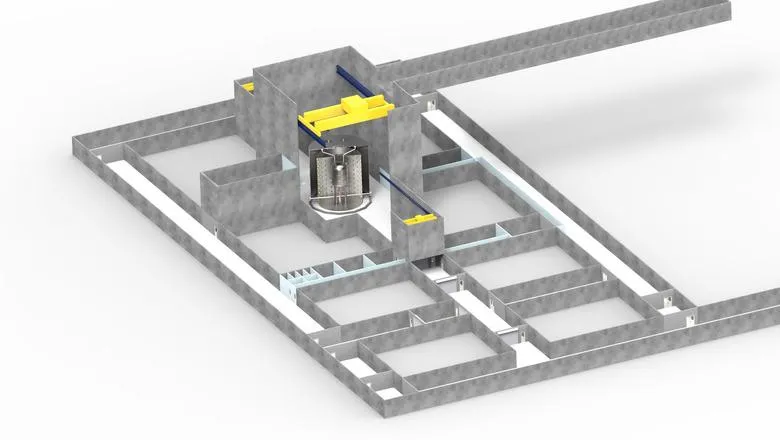Physicists from King's are working with universities across the UK to build an advanced dark matter detector ten times the size of the previous record holder.

Physicists from King's have begun work designing the world's largest and most advanced dark matter detector, alongside other leading UK universities.
A preliminary award of £8 million from the UKRI Infrastructure Fund will support a group of higher education institutions, led by Imperial College London, to work with the Science and Technology Facilities Council (STFC) Boulby Underground Laboratory for three-and-a-half years.
Dr Jim Dobson, alongside colleagues from UCL will lead the work on the techniques and controls to ensure ultra-clean manufacture of the UK contributions to the Xenon Lux-Zeplin Darwin (XLZD) Consortium designed detector. Their work will ensure that the materials used bear no traces of radioactivity, which could block the search for dark matter and other new discoveries in physics.
To control the inherent radiation of materials used in the construction, and to keep all materials free of any dust that would obscure measurement, we will build a world-leading centre for clean manufacture with the specific capability to manufacture in this way underground where the detector will be."
Dr Jim Dobson
Understanding the nature of dark matter, an unobserved form of matter that scientists suggest could make up to 85% of the universe, is one of science's biggest unsolved. If dark matter were to be found, it would help substantiate and prove several theories we have about the universe and how it works.
XLZD will attempt to detect dark matter by measuring how certain subatomic particles scientists believe may be possible candidates, interact with the world's largest tank of liquid xenon deep underground. The tank will be around ten times the size of the current largest liquid xenon detector, LUX-ZEPLIN in South Dakota and will allow scientists to search for dark matter signals at least ten times weaker than the previous record holder.
A liquid xenon detector is built with reflective panels and ultrasensitive photon detectors which detect when electrons and light which are emitted from xenon particles as dark matter candidates crash into them - travelling from out of space. By recording these readings, XLZD will hope to capture evidence of dark matter and observe other cosmic phenomena, such as neutrinos (near massless particles) from sources such as our sun or a nearby supernova.

The size and sensitivity of the instrument means that the detector is also sensitive to other interesting phenomena, such as alternative dark matter models and signals which could shed light on the origin of neutrino mass.
These detectors need to operate deep underground to limit the impact of background radiation from cosmic rays affecting the readings. It is why the group hope that the project will be hosted in the UK's deep underground science facility at Boulby mine in England.
In addition to the need to shield the detector from cosmic radiation, the team will also need to control the inherent radioactivity of materials used to build the detector, as all objects emit radiation. This will be the job of the team at King's and UCL, working closely with the other contributing UK institutes.
The XLZD detector will provide us with a huge step into uncharted territory. The size and precision of this detector will not only help us find dark matter but could also reveal unexpected discoveries that challenge the foundations of modern physics."
Dr Chris McCabe
Dr Dobson explains, "If we don't use only ultra-radiopure materials and techniques, the detector won't be able to pick up on the extremely rare dark matter or neutrino signals, and the additional size of XLZD requires even more stringent requirements than our previous detector, LUX-ZEPLIN.
"To control the inherent radiation of materials used in the construction, and to keep all materials free of any dust that would obscure measurement, we will build a world-leading centre for clean manufacture with the specific capability to manufacture in this way underground where the detector will be."
Dr Chris McCabe, a theoretical physicist at King's and partner on the project, will be using his expertise on dark matter and particle physics theory to maximise the potential of the detector.
He said, "The XLZD detector will provide us with a huge step into uncharted territory. The size and precision of this detector will not only help us find dark matter but could also reveal unexpected discoveries that challenge the foundations of modern physics."
The project team comprises colleagues from the institutions Birmingham University, Bristol University, Edinburgh University, Imperial College London, King's College London, Liverpool University, Oxford University, Queen Mary, University College London, Royal Holloway, University of London, Sheffield University, Sussex University and teams from STFC's Daresbury and Rutherford Appleton Laboratories.








